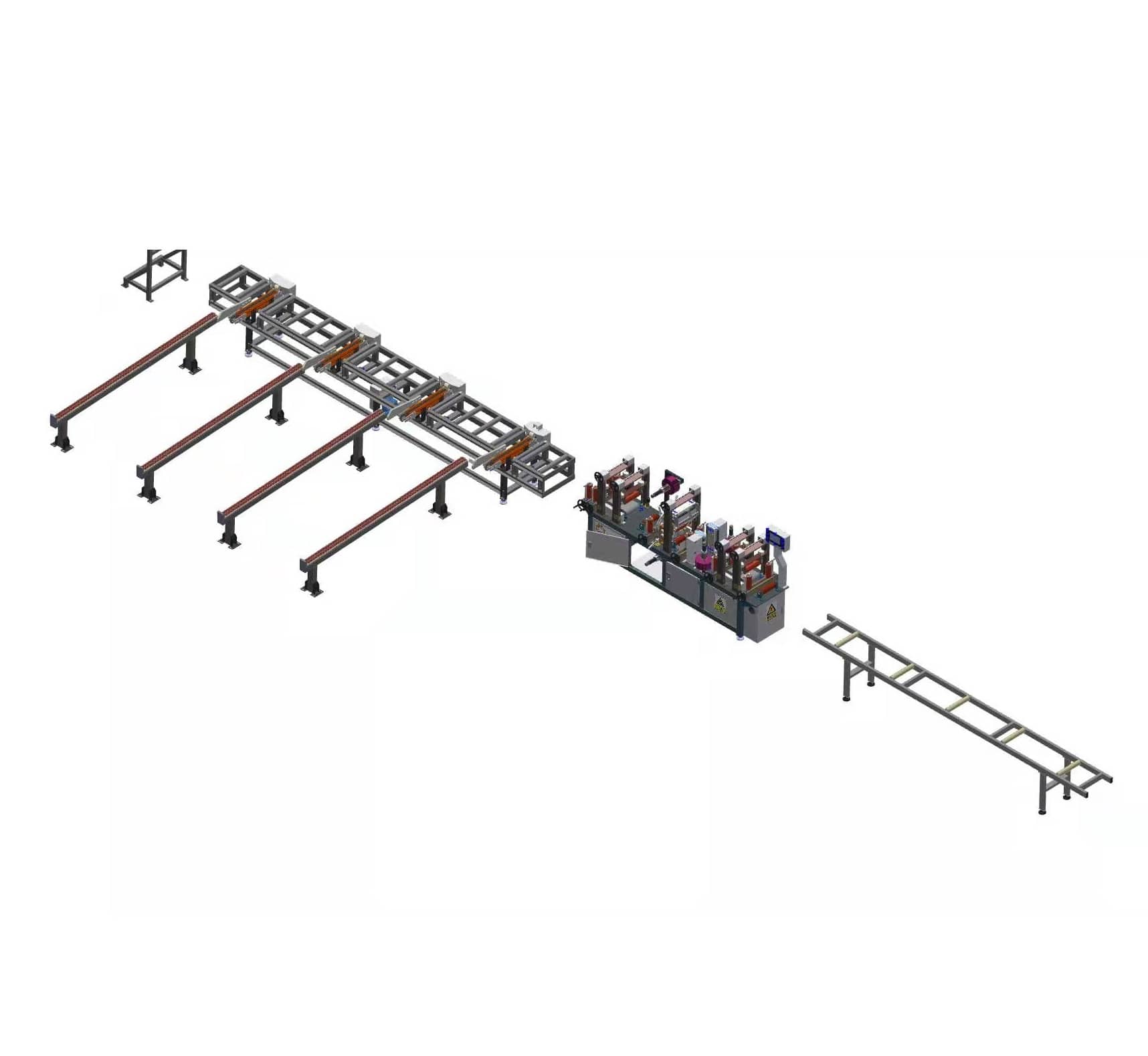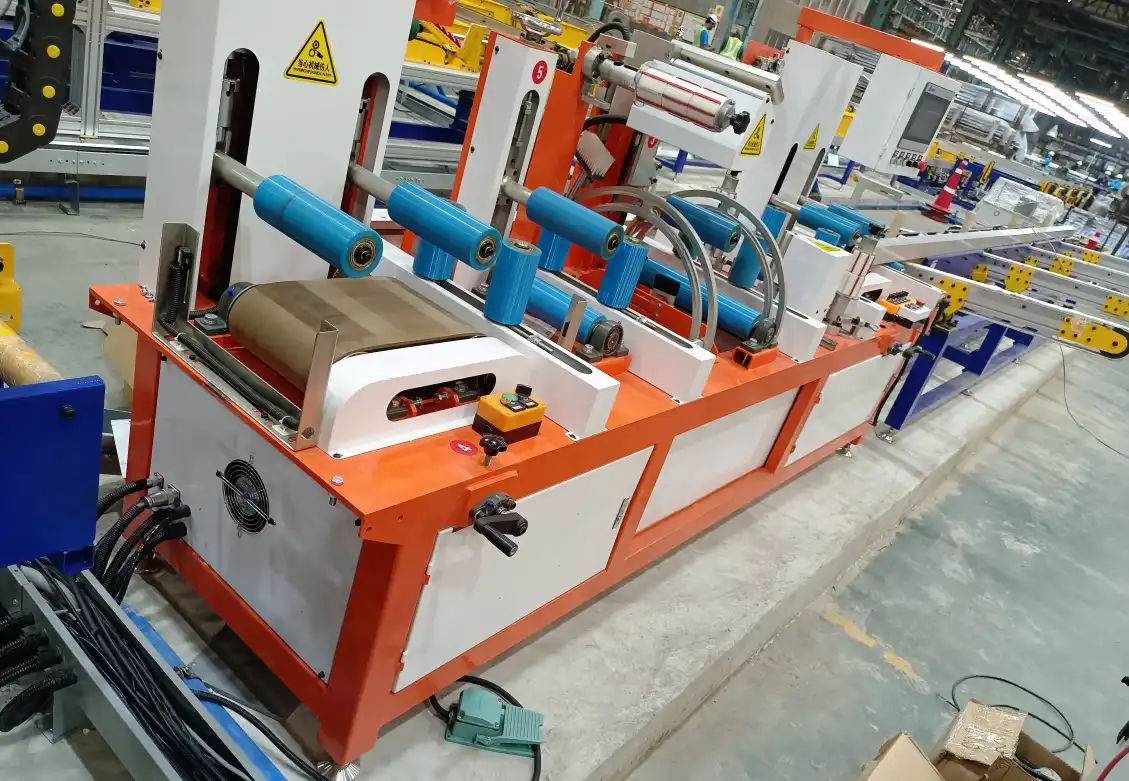Enhancing Aluminum Profile Protection: A Guide to 4-Sided Film Tapping Machines
Aluminum profiles are essential components in numerous industries, valued for their strength, lightweight nature, and versatility. However, their surfaces can be susceptible to scratches, abrasions, dirt, and other damage during handling, storage, transportation, and subsequent fabrication processes. Protecting these surfaces is crucial to maintain aesthetic quality and prevent costly rework. This is where automated protective film application comes into play.
A film tapping machine for aluminum profiles, specifically designed for 4-sided application, is an automated solution engineered to precisely apply protective films or tapes simultaneously or sequentially onto all four surfaces of an aluminum extrusion.
1. Why is Protective Film Application Necessary?
Before diving into the machinery, it's important to understand the critical role of protective films:
- Scratch Prevention: Guards against scratches during stacking, transport, and installation.
- Surface Integrity: Protects against contaminants like dust, mortar, paint, or chemical splashes during construction or assembly.
- Handling Protection: Reduces the risk of damage from tools or handling equipment during fabrication (cutting, drilling, machining).
- Quality Assurance: Ensures the end product reaches the customer or the next stage of production in pristine condition.
Manual application of film, especially on four sides, is time-consuming, labor-intensive, and prone to inconsistencies like bubbles, wrinkles, or misalignment. Automated solutions address these challenges effectively.
2. Understanding the 4-Sided Film Tapping Machine
This specialized equipment automates the protective film application process, delivering speed, efficiency, and consistency unattainable through manual methods. Key operational aspects and components typically include:
2.1 Core Components:

- Infeed/Feeding System: Utilizes conveyors, rollers, or belt systems to smoothly guide the aluminum profiles into the application zone. This system ensures proper alignment for accurate film placement.
- Film Roll Holders (Mandrels): Securely holds multiple rolls of protective film, typically one for each side being covered. These often feature tension control mechanisms to ensure smooth unwinding without stretching or tearing the film.
- Film Application Mechanism: The heart of the machine. This system employs rollers, pressure pads, or specialized applicators to press the film onto the profile surfaces. It's designed to handle the contours and dimensions of various profiles, ensuring adhesion across all four sides. Some machines apply film to opposite sides simultaneously, followed by the remaining two.
- Cutting System: Once the profile is covered, an automated cutting mechanism (e.g., rotary blades, guillotine cutters) precisely trims the film to the required length, ensuring a clean finish at the ends of the profile.
- Control System (PLC Panel): An operator interface (often a touchscreen HMI) allows users to input parameters such as profile dimensions, desired film overlap, machine speed, and cutting length. It monitors the process and provides diagnostics.
- Outfeed System: Gently transports the film-protected profiles out of the machine, often onto a collection table or the next stage in a production line.
2.2 The Automated Process:
- An aluminum profile enters the machine via the infeed system.
- Sensors detect the profile's presence and dimensions (in more advanced systems).
- Film from the rolls is unwound and guided towards the application rollers/pads.
- As the profile moves through the application zone, rollers press the adhesive side of the film firmly onto all four surfaces. Tension is carefully controlled.
- Once the profile has passed through the application zone or reached the desired length, the cutting system activates, severing the film cleanly.
- The protected profile exits the machine via the outfeed system.
3. Key Advantages of Automated Film Tapping
Implementing a 4-sided film tapping machine offers significant benefits:
- Increased Productivity: Dramatically speeds up the application process compared to manual methods, increasing throughput.
- Consistent Quality: Ensures uniform film application without bubbles, wrinkles, or gaps, enhancing the final product's appearance and protection level.
- Reduced Labor Costs: Automates a repetitive task, freeing up personnel for more complex duties and reducing direct labor expenses.
- Minimized Material Waste: Precise application and cutting reduce film wastage compared to manual trimming.
- Improved Safety: Reduces manual handling and potential for repetitive strain injuries associated with manual film application.
- Enhanced Product Protection: Reliable and complete coverage safeguards valuable aluminum profiles throughout the supply chain and fabrication processes.
4. Industries and Applications
These machines are indispensable in sectors that rely heavily on aluminum extrusions:

- Building and Construction: Protecting window frames, door profiles, curtain wall elements, and architectural trims.
- Automotive Industry: Applying film to trim parts, roof rails, and other aluminum components.
- Furniture Manufacturing: Protecting aluminum frames and decorative elements for residential and commercial furniture.
- Solar Panel Industry: Guarding the frames of solar modules during manufacturing and installation.
- General Manufacturing and Fabrication: Any application involving aluminum extrusions that require surface protection before further processing or assembly.
5. Considerations When Selecting a Machine
Choosing the right film tapping machine involves evaluating several factors:
- Profile Size and Complexity: Ensure the machine can handle the range of profile dimensions (width, height) and shapes you process.
- Required Throughput Speed: Match the machine's speed capabilities to your production line requirements.
- Film Type Compatibility: Verify the machine works with the specific types and thicknesses of protective film you intend to use (e.g., PE, PVC, different adhesive types).
- Level of Automation: Consider features like automatic profile detection, programmable settings, and integration capabilities with existing production lines.
- Budget and ROI: Evaluate the initial investment against the expected savings in labor, material waste, and improved quality.
- Manufacturer Support: Assess the availability of technical support, spare parts, and maintenance services.
6. Conclusion
The 4-sided film tapping machine represents a significant advancement in aluminum profile processing. By automating the critical task of protective film application, it offers manufacturers a reliable way to enhance product quality, boost operational efficiency, and reduce costs. As demands for high-quality aluminum products continue to grow across various industries, these automated systems play a vital role in ensuring profiles reach their final destination or fabrication stage in perfect condition.
It is always recommended to consult detailed specifications from manufacturers and potentially view demonstrations to ensure a chosen machine aligns perfectly with your operational needs.